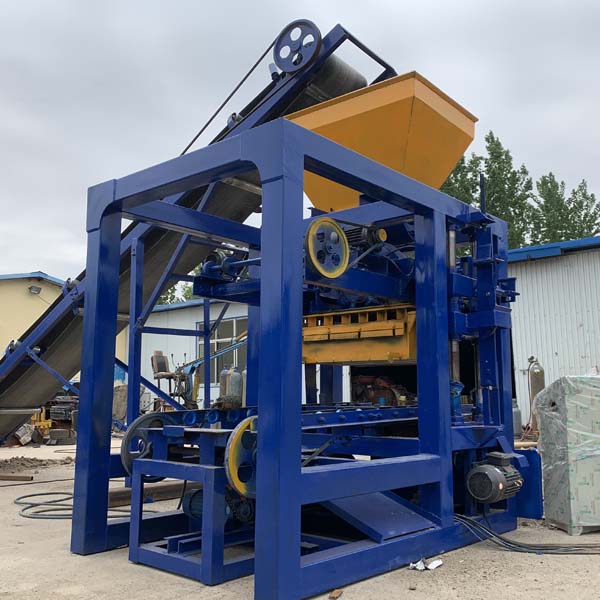
The construction industry, a cornerstone of human progress, has always been characterized by innovation and adaptation.
In recent years, the integration of technology into construction processes has brought about significant advancements, revolutionizing the way we build our world.
One of the most remarkable transformations is the emergence of cutting-edge brick making machinery, which offers the potential to automate and enhance the entire building process.
This essay explores the profound impact of automated brick making machinery on construction efficiency and precision, delving into its technological components, advantages, challenges, and the broader implications for the industry.
Engineering Marvels: The Technological Core of Automated Brick Making Machinery
At the heart of the automated brick making revolution lies a host of intricate technological components.
These advanced machines seamlessly integrate a range of technologies, including robotics, artificial intelligence (AI), and sophisticated control systems.
The automation process begins with the preparation of raw materials, where conveyors and sorting mechanisms efficiently deliver the necessary components to the production line.
State-of-the-art robotic arms take center stage, intricately molding the bricks with unparalleled precision.
AI-driven algorithms monitor every step of the production process, adjusting parameters in real-time to ensure consistent quality and optimal resource utilization.
Additionally, advanced sensors and monitoring systems detect any deviations or defects, minimizing the likelihood of faulty bricks entering the construction supply chain.
The culmination of these technologies creates a seamless, automated, and highly efficient brick production process that drastically reduces the need for manual intervention.
Unleashing Efficiency: The Multifaceted Advantages of Automated Brick Making
The adoption of cutting-edge brick making machinery offers a myriad of advantages that significantly enhance construction efficiency.
Firstly, automation drastically accelerates the production timeline.
Traditional brick manufacturing methods often required time-consuming manual labor and extensive curing periods.
In contrast, automated brick making machines operate 24/7, producing a consistent stream of bricks without interruptions, thereby minimizing construction delays and expediting project completion.
Secondly, precision becomes a hallmark of automated brick making.
The robotic arms and AI-driven controls ensure uniformity in brick size, shape, and texture, eliminating variations that could compromise structural integrity or hinder aesthetic appeal.
This level of precision contributes to safer, more resilient buildings and reduces wastage, as defective bricks are significantly minimized.
Furthermore, automation streamlines resource utilization.
These advanced machines optimize the consumption of raw materials, energy, and water, contributing to cost savings and environmental sustainability.
By accurately calculating and dispensing the required quantities, wasteful practices are minimized, aligning with the growing global emphasis on responsible resource management.
Overcoming Challenges: The Path to Seamless Integration
While the promises of automated brick making are enticing, challenges on the road to seamless integration remain.
A significant hurdle lies in the initial investment required to procure and install these cutting-edge machines.
The cost may pose a barrier for some construction companies, particularly smaller enterprises with limited financial resources.
Overcoming this challenge necessitates strategic financial planning, potentially through partnerships, grants, or government incentives that promote the adoption of innovative construction technologies.
Additionally, the human element cannot be overlooked.
The transition from manual labor to automated processes requires a skilled workforce capable of operating, monitoring, and maintaining the machinery.
Consequently, investment in training programs and upskilling initiatives is imperative to equip workers with the expertise needed to harness the full potential of automated brick making machinery.
Fostering a culture of technological proficiency within the construction industry will be instrumental in overcoming this challenge.
A Paradigm Shift: Shaping the Future of Construction
The integration of automated brick making machinery marks a paradigm shift that extends beyond construction efficiency and precision.
The shift towards automation will likely redefine the roles and responsibilities of construction workers.
As machines take over repetitive and physically demanding tasks, the workforce can focus on higher-value activities such as design, planning, and overseeing automated processes.
This transformation has the potential to elevate the industry’s overall skill profile, attracting new talent and fostering innovation.
Furthermore, the adoption of automated brick making machinery aligns with broader industry trends towards sustainable and eco-friendly practices.
By optimizing resource utilization and reducing waste, these machines contribute to a greener construction footprint, addressing environmental concerns and regulatory requirements.
In conclusion, the integration of cutting-edge brick making machinery represents a pivotal moment in the evolution of the construction industry.
The fusion of robotics, AI, and advanced controls ushers in a new era of efficiency, precision, and sustainability.
As automation streamlines the brick production process, construction timelines are expedited, quality is elevated, and resource utilization is optimized.
While challenges related to costs and workforce adaptation must be navigated, the potential benefits in terms of construction efficiency, reduced environmental impact, and workforce transformation make the adoption of automated brick making machinery a compelling prospect for the future of construction.
As technology continues to reshape industries, automated brick making stands as a testament to the power of innovation in shaping a more efficient and dynamic built environment.
